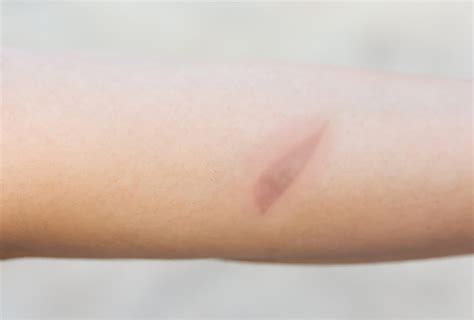Effective Treatments for Minor Burns
Minor Burns FAQ
What are the signs and symptoms of a burn?
Burn symptoms vary depending on how deep the skin damage is. It can take a day or two for the signs and symptoms of a severe burn to develop. 1st-degree burn. This minor burn affects only the outer layer of the skin (epidermis). It may cause redness and pain. 2nd-degree burn.
What are sunburns & scalds?
Burns are tissue damage that results from heat, overexposure to the sun or other radiation, or chemical or electrical contact. Burns can be minor medical problems or life-threatening emergencies. The treatment of burns depends on the location and severity of the damage. Sunburns and small scalds can usually be treated at home.
What are the different types of Burns?
There are three primary types of burns: first-, second-, and third-degree. Each degree is based on the severity of damage to the skin, with first-degree being the most minor and third-degree being the most severe. Damage includes: third-degree burns: widespread thickness with a white, leathery appearance There are also fourth-degree burns.
What are Burns & how are they treated?
Burns are injuries, usually to your skin, that are caused by heat, sunlight, electricity, radiation, or chemicals. Burns from heat or chemicals usually affect your skin but sometimes can affect muscles, fat, or bones Small, shallow burns can often be treated at home by keeping the area clean and using an antibiotic burn cream
What is a 3rd Degree Burn?
This type of burn affects both the epidermis and the second layer of skin (dermis). It may cause swelling and red, white or splotchy skin. Blisters may develop, and pain can be severe. Deep second-degree burns can cause scarring. 3rd-degree burn. This burn reaches to the fat layer beneath the skin. Burned areas may be black, brown or white.
What is the difference between a burn and a scald?
Burns and scalds are damage to the skin usually caused by heat. Both are treated in the same way. A burn is caused by dry heat – by an iron or fire, for example. A scald is caused by something wet, such as hot water or steam. The amount of pain you feel is not always related to how serious the burn is.
What is a 1st Degree Burn & 2nd Degree Burn?
1st-degree burn. This minor burn affects only the outer layer of the skin (epidermis). It may cause redness and pain. 2nd-degree burn. This type of burn affects both the epidermis and the second layer of skin (dermis). It may cause swelling and red, white or splotchy skin. Blisters may develop, and pain can be severe.
Minor Burns References
If you want to know more about Minor Burns, consider exploring links below:
What Is Minor Burns
- https://www.nhs.uk/conditions/burns-and-scalds/
- https://www.healthline.com/health/burns
- https://www.nhsinform.scot/illnesses-and-conditions/injuries/skin-injuries/burns-and-scalds
- https://www.theguardian.com/lifeandstyle/2020/jan/12/how-to-treat-a-minor-burn
- https://www.mayoclinic.org/diseases-conditions/burns/symptoms-causes/syc-20370539
- https://www.aad.org/public/everyday-care/injured-skin/burns/treat-minor-burns
- https://www.msdmanuals.com/en-gb/home/quick-facts-injuries-and-poisoning/burns/burns
Minor Burns Information
- https://www.sja.org.uk/get-advice/first-aid-advice/effects-of-heat-and-cold/burns-and-scalds-in-children/
- https://patient.info/skin-conditions/burns-and-scalds-leaflet
- https://leaflets.ekhuft.nhs.uk/caring-for-your-minor-burn/
- https://cks.nice.org.uk/topics/burns-scalds/
- https://www.britishburnassociation.org/patient-advice/
Explore Related Topics
Asthma-Friendly Environments: Preparing Your Home for Baby
Offering advice on creating an asthma-friendly environment in your home in preparation for your new baby.
